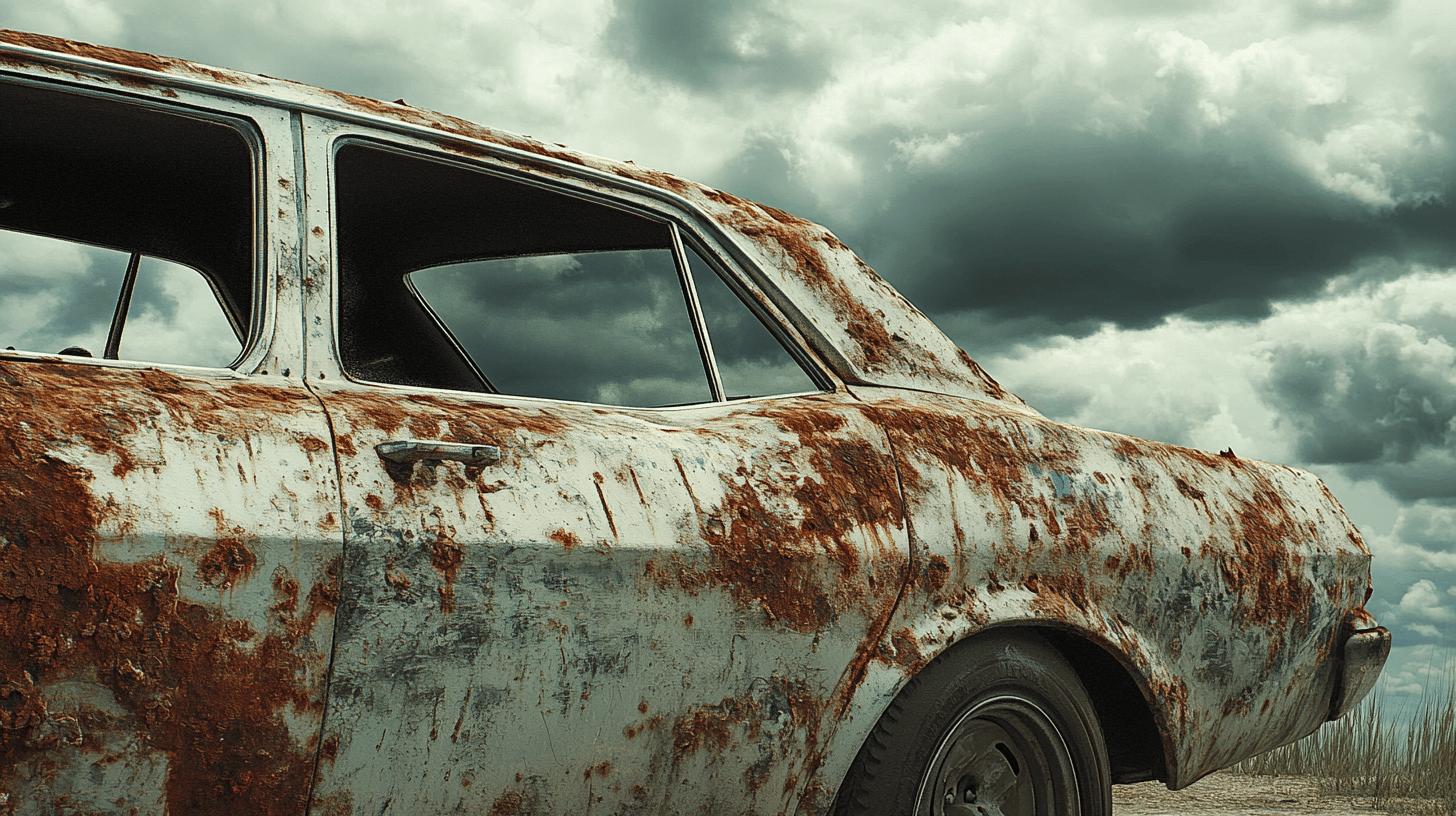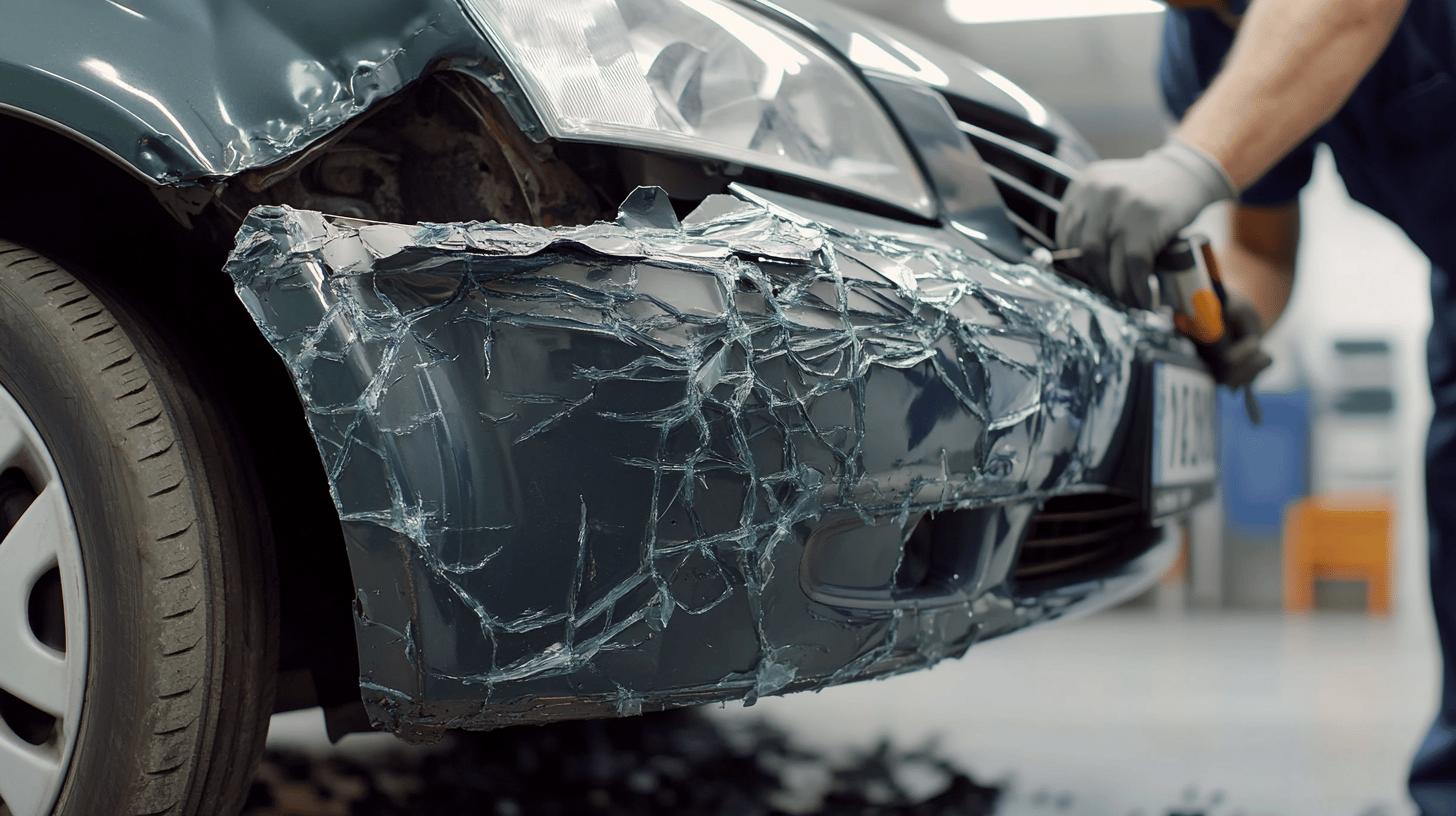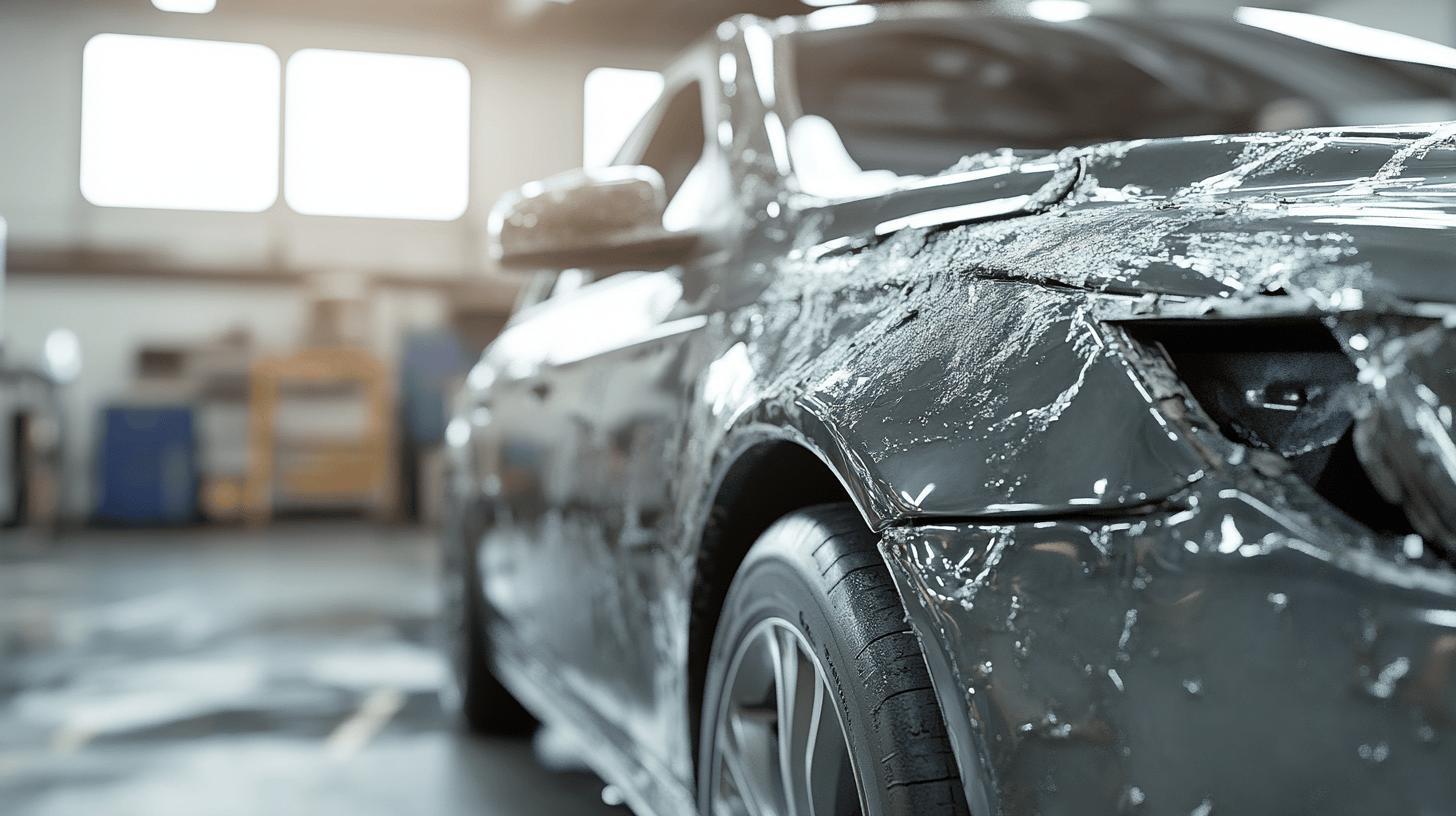Ever wondered how a tiny scratch or dent could significantly impact your vehicle’s value and appearance? Car body damage comes in many forms, each requiring its own specific repair method. Understanding these types will not only help you maintain your car’s aesthetic appeal but also ensure its structural integrity. In this article, Velocity Car Spray dives deep into the various types of car body damage, from minor scratches to severe collision impacts, offering insights into their causes and potential repair strategies. Whether you’re dealing with a parking lot ding or rust from harsh weather, we’ve got you covered.
Common Types of Car Dents
Car dents are a frequent issue that vehicle owners encounter. They can vary from minor, easily repairable dings to more severe damage requiring professional attention. Understanding the types of dents and their causes can help in determining the appropriate repair method.
| Dent Type | Cause | Repair Method |
|---|---|---|
| Round Dents | Hail, small objects like stones | Paintless Dent Repair (PDR) |
| Crescent-shaped Dents | Minor collisions, parking lot incidents | Traditional Dent Repair |
| Sharp Dents | Impact from pointed objects | Traditional Dent Repair, PDR |
| Creased Dents | Sliding objects, scraping against another vehicle | Body Filler, Repainting |
Round dents, often caused by hail or small objects like stones, are superficial and generally do not damage the paint. Paintless Dent Repair (PDR) is the preferred method for these since it involves massaging the dent out from the inside of the panel without affecting the paintwork. This technique is cost-effective and preserves the car’s original finish.
Crescent-shaped dents result from minor collisions or parking lot incidents. These dents often stretch and crease the metal, making them more challenging to repair. Traditional dent repair methods, including pulling the dent out and then sanding, filling, and repainting the area, are typically required.
Sharp dents, caused by impact from pointed objects, and creased dents, resulting from sliding or scraping incidents, often involve more extensive damage. Sharp dents may be addressed with either PDR or traditional methods, depending on the severity. Creased dents usually require body filler and repainting to ensure a smooth surface and consistent colour match.
Different Types of Car Scratches
Addressing car scratches promptly is crucial to prevent further damage, such as rust, and to maintain the vehicle’s appearance and value. Scratches can arise from various sources, including impacts, vandalism, and improper washing techniques.
- Clear Coat Scratches
- Paint Scratches
- Primer Scratches
- Deep Scratches
- Key Scratches
Clear coat scratches are the most superficial type, affecting only the top layer of the car’s paint. They are often caused by improper washing or light abrasions. These scratches can usually be buffed out using a polishing compound, restoring the car’s glossy finish without needing extensive repairs.
Paint scratches penetrate the clear coat and reach the paint layer. These scratches are more noticeable and can result from minor impacts or scraping against objects. Repairing paint scratches typically involves sanding the affected area, applying touch-up paint, and then polishing to blend the new paint with the old.
Primer scratches go deeper, reaching the primer layer beneath the paint. These scratches are caused by more significant impacts and require a more involved repair process. The damaged area must be sanded down to the primer, repainted, and clear-coated to achieve a seamless finish.
Deep scratches are the most severe, reaching the metal body of the vehicle. These scratches can be caused by accidents, severe impacts, or deliberate vandalism. Repairing deep scratches involves sanding down to the bare metal, applying primer, paint, and clear coat, and may necessitate professional intervention to ensure proper adhesion and finish.
Key scratches are a common form of vandalism and can vary in depth. They often follow a long, continuous line across the vehicle’s surface. Depending on their severity, key scratches might require a combination of sanding, filling with body filler, repainting, and clear-coating. Addressing these quickly can prevent rust and further deterioration, maintaining the vehicle’s appearance and structural integrity.
Weather-Related Car Body Damage

Weather can significantly impact a vehicle’s body, causing various forms of damage that can affect both appearance and functionality. Hailstorms can leave dents, prolonged sun exposure can fade the paint, and rain or snow can lead to rust. Understanding these types of damage and their repair methods is crucial for maintaining a car’s condition.
- Hail Dents
- Sun Damage
- Rain-Related Rust
- Snow and Road Salt Rust
Hail damage is characterised by numerous small dents across the car’s surface, typically on the hood, roof, and boot. Technicians often use Paintless Dent Repair (PDR) to fix these dents. PDR involves massaging the dented metal back to its original shape without affecting the paint, making it a quick and cost-effective solution.
Sun damage, caused by prolonged exposure to UV rays, can fade and crack the car’s paint. To repair this, affected areas are usually sanded down and repainted. Applying a paint protection film can prevent future sun damage by providing a protective barrier against UV rays.
Rain-related rust occurs when water seeps into exposed metal parts, causing oxidation. This type of rust often affects the car’s undercarriage and wheel wells. Repairing rain-related rust involves removing the rusted area, applying a rust converter, and repainting or sealing the metal to prevent further oxidation.
Snow and road salt rust is common in regions with harsh winters. The salt used to melt snow on roads accelerates the rusting process on a car’s undercarriage and other exposed parts. Regular washing to remove salt and applying undercoating can help prevent this damage. For existing rust, technicians will typically use rust converters and protective coatings to restore the affected areas.
Car Paint Damage and Restoration
Maintaining car paint is crucial not only for aesthetic reasons but also for protecting the underlying metal from corrosion and rust. Various factors can cause paint damage, and understanding these is essential for effective restoration.
| Damage Type | Cause | Restoration Method |
|---|---|---|
| Minor Scratches | Light abrasions, improper washing | Buffing, touch-up paint |
| Deep Scratches | Accidents, deliberate vandalism | Sanding, repainting |
| Paint Fading | UV exposure | Polishing, respraying |
| Paint Peeling | Environmental factors, poor quality paint | Respraying |
Minor paint damage, such as light abrasions and minor scratches, can often be repaired with touch-up paint or buffing. These scratches are usually superficial, affecting only the clear coat. Buffing with a polishing compound can remove these scratches, restoring the car’s glossy finish. Touch-up paint can be applied to small chips or deeper scratches, which helps to prevent rust and further deterioration.
Deep scratches are more severe as they penetrate through the clear coat and paint layers, sometimes reaching the primer or metal. These scratches often result from accidents or deliberate vandalism. Repairing deep scratches requires sanding the damaged area, applying new paint, and respraying the clear coat to ensure a seamless finish. Professional intervention is often needed for these types of repairs to ensure proper adhesion and colour matching.
Paint fading is commonly caused by prolonged exposure to UV rays. The sun’s harmful rays can cause the paint to lose its lustre, leading to a dull appearance. Polishing can sometimes restore the paint’s shine if the fading is not too severe. However, significant fading will likely require the affected panels to be resprayed to restore the car’s original appearance.
Paint peeling occurs due to various environmental factors or the use of poor-quality paint. This condition, known as delamination, happens when the clear coat starts to separate from the paint layer beneath. The only effective restoration method for paint peeling is respraying the affected areas. This involves removing the peeling paint, sanding down the surface, applying primer, and then respraying with high-quality automotive paint and clear coat.
Collision and Accident Damage
Car collision damage can vary widely in terms of severity and impact on the vehicle. Understanding the types of damage that can occur during an accident and the necessary repairs is crucial for maintaining both safety and vehicle value.
- Frame Damage
- Engine and Transmission Damage
- Suspension Damage
- Body Panel Damage
- Windshield and Glass Damage
Frame damage is one of the most serious types of car collision damage. It can compromise the structural integrity of the vehicle, making it unsafe to drive. Repairing frame damage often involves straightening the frame using specialised equipment and may require replacing parts of the frame entirely. The cost for such repairs can be significant due to the labour and expertise needed.
Engine and transmission damage can occur during severe collisions, affecting the vehicle’s performance and reliability. These components are vital for the car’s operation, and damage can lead to costly repairs or replacements. A professional mechanic must thoroughly assess the extent of the damage to provide an accurate repair cost estimation, which can range from moderate to extremely high, depending on the severity.
Suspension damage is another common issue resulting from accidents, particularly those involving high-speed impacts or rollovers. The suspension system includes various parts such as shocks, struts, and control arms, which can be bent or broken. Repairing suspension damage ensures the vehicle’s handling and safety are restored. The repair process usually includes replacing damaged components and performing an alignment, with costs varying based on the extent of the damage.
Body panel damage, such as dents, scratches, and crumpled areas, is often the most visible result of a collision. While minor dents and scratches can be repaired using techniques like paintless dent repair or touch-up paint, more severe damage may require panel replacement and repainting. The cost for body panel repairs can range from relatively inexpensive for minor issues to quite high for extensive damage requiring multiple parts.
Windshield and glass damage, such as cracks or shattered windows, is also common in vehicle accidents. Replacing a windshield or other car windows is usually straightforward but can be costly, especially for vehicles with advanced features like rain sensors or heads-up displays. Prompt repair or replacement is essential to ensure the driver’s visibility and safety.
Bumper Damage and Repair Techniques

Bumper damage is a common issue that can significantly affect vehicle safety and aesthetics. Prompt repairs are essential to ensure that the bumper can effectively absorb impact during collisions, thereby protecting the car’s structural integrity and its occupants.
- Minor cracks
- Scratches and scuffs
- Dents and dings
- Severe damage requiring full replacement
Minor cracks in the bumper are often the result of low-speed impacts or minor collisions. Fixing these cracks usually involves plastic welding, where the damaged area is fused back together, followed by sanding and repainting to restore the original appearance. This method is cost-effective and can be completed relatively quickly.
Scratches and scuffs are another common form of bumper damage, often caused by parking mishaps or minor brushes against objects. These surface-level damages can be repaired using techniques such as sanding and buffing, followed by repainting the affected area. This ensures a smooth finish and maintains the bumper’s visual appeal.
Dents and dings, typically resulting from more significant impacts, often require more extensive repairs. These can be addressed using specialised tools to pull or push the dent back into shape, followed by any necessary sanding and repainting. In some cases, filler may be used to smooth out the surface before painting.
Severe damage, such as large cracks, splits, or extensive deformation, usually necessitates full bumper replacement. This is especially common in high-speed collisions or rear-end accidents. Replacing the bumper involves removing the damaged one and fitting a new bumper, which is then painted to match the vehicle’s colour. This ensures that the bumper can effectively protect the vehicle in future incidents.
Identifying and Repairing Rust Damage
Rust damage on cars is primarily caused by exposure to moisture, snow, and road salt. These elements lead to oxidation, which can affect both the vehicle’s appearance and structural integrity. Understanding how to identify and repair rust damage is essential for maintaining your car’s longevity.
| Rust Type | Cause | Repair Method |
|---|---|---|
| Surface Rust | Exposure to moisture and air | Sanding, rust converter, repainting |
| Scale Rust | Prolonged exposure to moisture | Grinding, rust treatment, body filler, repainting |
| Penetrating Rust | Long-term neglect of rust | Cutting out affected area, welding new metal, repainting |
| Underbody Rust | Road salt, snow, and water | Rustproofing, undercoating, regular washing |
To repair surface rust, start by sanding the affected area to remove the rust. Apply a rust converter to neutralise any remaining rust and prevent further oxidation. Finally, repaint the area to restore its appearance and protect the metal. Surface rust is relatively easy to manage if addressed promptly.
Scale rust requires more extensive efforts. Begin by grinding the rusted area to remove all traces of rust and reach the bare metal. After grinding, apply a rust treatment to ensure no rust remains. Use body filler to smooth out any imperfections, then sand, prime, and repaint the area. This method ensures a durable repair and helps prevent future rust formation.
Penetrating rust is the most severe form of rust damage and often necessitates professional intervention. This type of rust occurs when rust has been neglected for an extended period, leading to holes in the metal. The affected area must be cut out, and new metal welded in place. After welding, the area should be sanded, primed, and repainted. This process restores the structural integrity of the vehicle.
Preventive measures for underbody rust are crucial, especially if you live in an area with harsh winters. Regularly washing the undercarriage, especially during winter months, helps remove road salt and prevent rust. Rustproofing and undercoating your vehicle provide an additional layer of protection against moisture and salt. Routine inspections can also help catch rust early, ensuring timely repairs and extending your vehicle’s lifespan.
Final Words
Exploring types of car body damage, it’s clear that dents, scratches, and weather-related damage are common and affect appearance and value.
A proactive approach to addressing paint damage and collision effects ensures a well-maintained vehicle.
Handling different bumper and rust damages promptly maintains both safety and aesthetics.
Understanding the types of car body damage helps choose the right repair methods, preserving quality.
Regular maintenance and timely repairs keep vehicles in top form, enhancing both performance and appearance.
Expert solutions for all types of car body damage – Contact us for a professional assessment today!
FAQ
What are the different types of body damage in cars?
Body damage in cars includes dents, scratches, paint damage, rust, and bumper damage. Each requires specific repair methods to restore the car’s appearance and functionality.
What are the different categories of car damage?
Car damage categories in the UK include Category A (severe damage, not repairable), Category B (severe damage, parts only), Category S (structurally damaged, repairable), and Category N (non-structurally damaged, repairable).
What is bodywork damage?
Bodywork damage refers to any harm sustained by a car’s external panels and structures. This includes scratches, dents, rust, and paint damage, impacting the vehicle’s appearance and structural integrity.
What damage to cars is most common?
Common car damage includes minor dents, scratches, bumper damages, and paint chipping. These often occur from parking incidents, road debris, or minor collisions. Prompt repair helps maintain vehicle value and appearance.
What are the repair methods for car body damage?
Repair methods vary: paintless dent repair for minor dents, respraying or touch-up paint for scratches and paint damage, plastic welding for bumper cracks, and rust treatments followed by repainting for rust damage.

